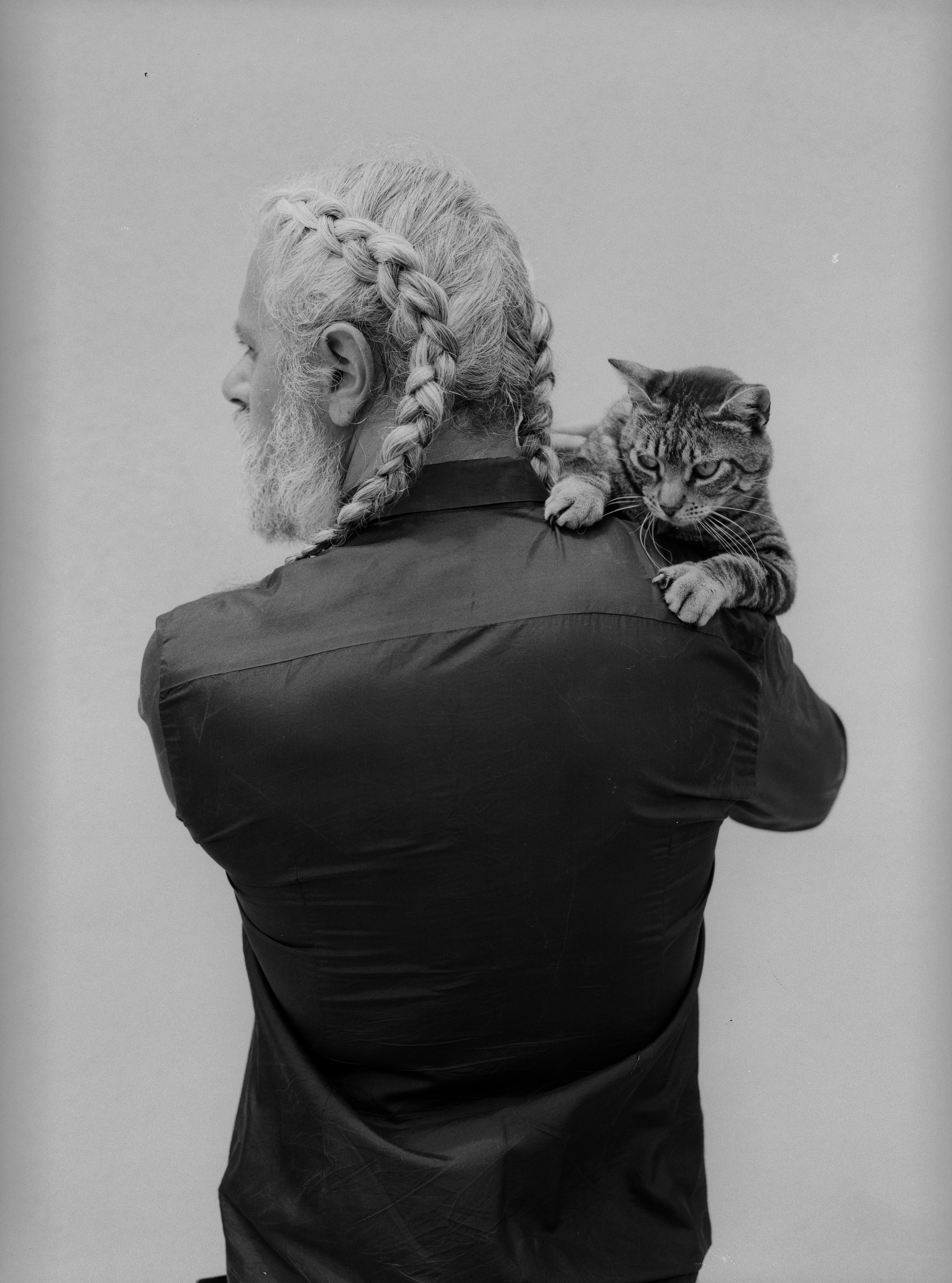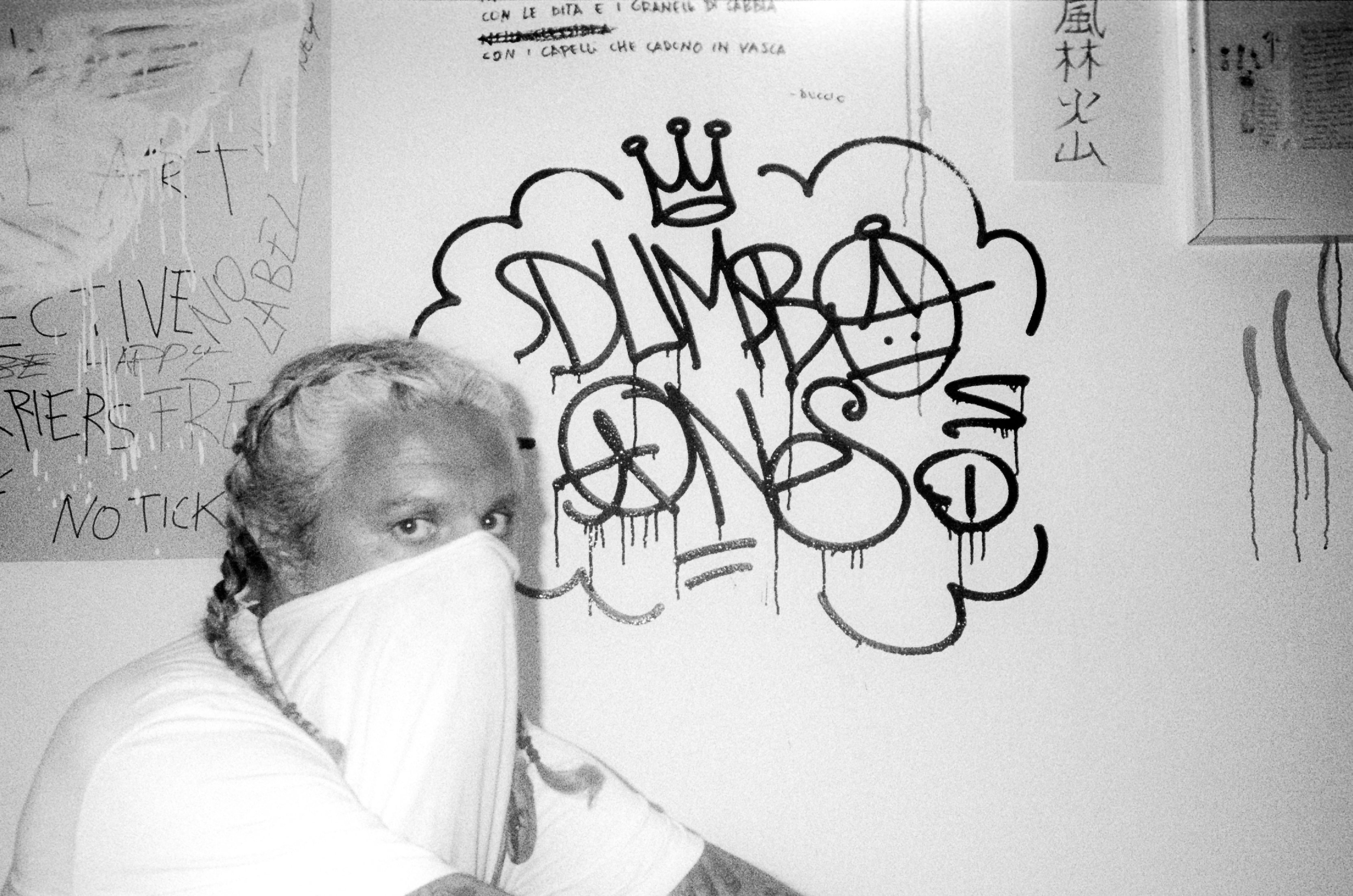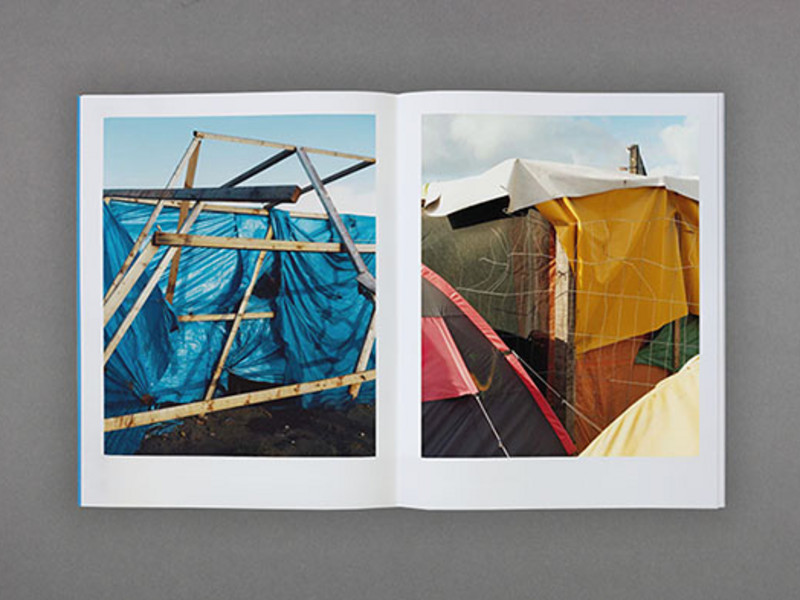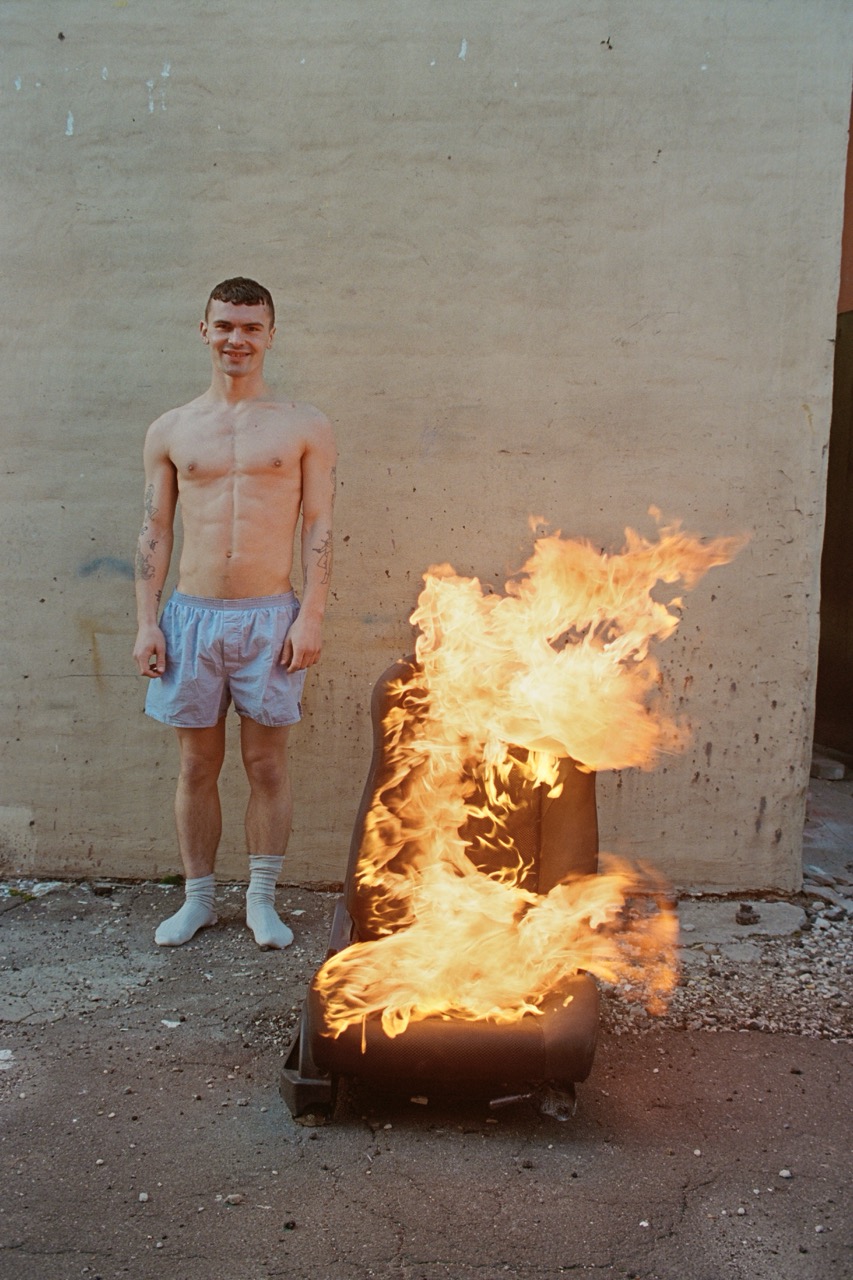The Performance of Life with Jean-Pierre Villafañe

In his latest body of work, a series of murals situated in Cecchi’s restaurant in the West Village titled “Into the Night,” Villafañe further explores both the intersection between architecture and painting, as well as the divide between private and public spheres. Read more about the multi-medium artist below.
Your creative endeavors originated within the realm of architecture. Why did you set out to learn about architecture initially and how does it now impact your visual creations?
While growing up in Puerto Rico, I had the opportunity to create numerous murals, each dedicated to celebrating the unique visual identity of different neighborhoods. Engaging in these artistic endeavors within the public space ignited a fascination with architecture, as I came to realize the captivating interplay between how people move through spaces and the art of spatial design. I've intertwined painting with my architectural training, deploying classical representational instruments used to conceive and communicate spaces to rather distort them and elevate them to fantasy. Through painting, I began to question the scalar and annotative aspects of the drafted line, using it to recompose reality and question the consequences of visual communication and representation.
My work seeks to traverse the intersection between figurative painting and architecture, drawing from the idiosyncratic associations I encounter in my dialectic relationship with the city. I use the viewer's gaze to transform moments in the urban environment into a stage setting, taming and domesticating them in my paintings and sculptural dioramas. By presenting private spaces in section-cut-type depictions of interiors, I seek to give the spectator a glimpse into the daily performance of life — both deliberate and subliminal — revealing sealed scenes of self-realization and re-establishing the city as an intimate spectacle of desires fulfilled and celebrated.
You have studied in New York City, Hong Kong, and Brazil, and your work has been exhibited all around the world. How has this multicultural viewpoint informed your work?
The compositions I create offer a captivating lens through which I analyze the profound journey of connecting with a city from an outsider's perspective — viewing it as a tapestry of experiences and artifice-crafted culture. During my year in Hong Kong, I delved deeply into the art of calligraphy. In Brazil, I had the opportunity to visit many projects designed by the architect Roberto Burle Marx. The spaces offered a harmonious fusion of artistic disciplines, including painting, architecture, urban planning, and embroidery. This eclectic amalgamation had always held me spellbound, leaving an indelible mark on my artistic sensibilities. Now, in the bustling embrace of New York City, my gaze finds itself entranced by the city's density and the mesmerizing microcosms that unfurl in every corner of Manhattan. Each block seems to encapsulate a distinct universe within itself, and I find myself drawn to reverently exalt the chaotic urban fabric and diverse architectural fantasies that play out in this vibrant metropolis.
Though you often paint with oil, many of your pieces include multiple mediums — from graphite to screen print to pastels. Why do you choose to work across multifaceted mediums? How does it strengthen the message behind your works?
The root of my work lies in the integration of multiple layers of meaning, each uniquely portraying distinct nuances and depictions from a myriad of characters I have encountered. These ideas become materialized through delicate strokes of pastels, amplifying the allure of make-up, to the versatile use of graphite, where lines and shadows conjure memories of my architectural background, and further employing screenprint to infuse a photo-realistic dimension into my compositions. The trajectory has been one of continuous experimentation. Recently, I ventured into the realm of architectural dioramas, akin to peepshows, an immersive experience where viewers peer through a peephole only to encounter a world of mirrors, with their own reflections gazing back at them. This dynamic course of dimensional and material experimentation has provided me with the means to delve into an entertaining play of unleashed excess and whimsical intimacy.
You have expressed before that your reliance on multiple mediums and techniques manifests as “acts of deviation.” And many of your paintings explore the rambunctious parts of life as well. Do you think there is enlightenment or a release in deviating from what is expected from time to time?
The concept of escapism is a subject that profoundly fascinates me. Through my compositions, the boundaries of the tangible and intangible blur, allowing me to weave narratives in a vivid and satirical portrayal of society. I showcase various aspects of human nature. The paintings play with humor, observations on human relationships, and societal norms with the aim to seek respite and solace from disconcerting realities, particularly through the pursuit of diversion and enchantment. This inclination manifests through the search for entertainment and the engagement in realms of fantasy, wherein the mind can briefly detach itself from the burdens of life's harsher aspects.
Through the gestural strokes, I weave and fragment intricate microcosms within the embrace of artificial surroundings, offering a portal into alternative realms where the whimsical, dark, grotesque, and comical all coexist. As beholders of my work, we are transported to a universe of perpetual metamorphosis — a wild gathering we only dare to imagine. Enigmatic scenes unfold before our eyes, adorned with carnivalesque figures that sway in and out of the foreground, immersed in a captivating dance amidst a backdrop of endless debauchery. These artful depictions evoke memories of Prohibition-era festivities and lavish soirees, filling us with an exuberant sense of joy, playfulness, and spontaneity.


I first met you when I visited your studio in Chinatown. In what ways does your current location in NYC, especially your specific neighborhood, influence your work and subjects?
Nestled on a distinct corner, my studio gazes upon the final section of Sarah D. Roosevelt Park, where a medley of activities unfolds throughout the day. From gamblers, to gracefully choreographed dancers, to sports enthusiasts. Adjacent to it all, a bus stop serves as a portal, whisking people away to various random corners of America. The neighborhood truly epitomizes a melting pot within the already diverse city, acting as a gateway connecting the Lower East Side with the enigmatic heart of Chinatown. These captivating characters I observe often appear in my paintings, their contrasting identities seamlessly finding their way into the menageries of my artistic compositions.
Your figures all take on a whimsical and animated form. Why do you choose to present all of the characters you paint in this fantastical way — what does this convey about the people and “characters” you come across in real life?
Through the use of striking rhythms and improvisational techniques, which I consider both artistic and conceptual acts of deviation, I transform the human body into a stage. My brushstrokes become sensuous, lyrical lines, and dense figures of luminous color serve as linguistic elements, impacting the bodily subjects both physically and emotionally. By embracing these carnivalesque properties, I seek to reimagine identities, breaking down roles and reshaping the inner worlds of the characters. In my artwork, everyday life in New York becomes a theatrical spectacle, striking a delicate balance between playfulness and gloom, the grotesque intertwined with humor. It delves into fantastical realms featuring puppets and dolls that symbolize our ever-fluctuating, ever-changing identities to reconfigure the way bodies intertwine and move through spaces.
What was the inception point that intrigued you and led you to want to explore the taboo, the unseen, or the unspoken in your renderings?
In the streets of cities like NYC, a fabric of many different personalities unfolds, where people tirelessly toil, yearning for respite from the unrelenting demands of their lives. This quest for escape often leads to concealed acts of debauchery and vice, where indulgence in activities like drinking or the use of drugs becomes a way to cope with the pressures of reality. Having been raised with a Catholic upbringing, I've always found amusement in the absurdity of blind subservience to norms and the establishment. Instead, I seek to carouse in the unconventional and discover the satirical pleasures that lie deep within the confines of traditional systems, such as religion, politics, and societal conventions.
Many of the figures and spaces you create are incredibly detailed — down to the accessories or outfits that are portrayed. How does fashion play a role in your artwork? Do the things some of your figures wear convey certain messages about the work itself?
The fashion portrayed in my art becomes a vivid representation of the allure and extravagance the characters yearn to escape into, transcending their world of excess and exuberance. Draping fabrics take on architectural forms, while stiletto heels engage in animated, lifelike interactions. These garments serve as a medium for bodies to intertwine, blending architectural visions with the poetic essence of chance encounters. At times, a single suit may house multiple bodies, and culottes give rise to multiple figures, all amidst patterns and graphics that distort perceptions of articulation and movement. Concurrently, hats bestow the characters with stature, glamour, and allure, evoking notions of specific professions. The intention is to create a scene within a scene, captivating the viewer's gaze as they gradually unravel the intricacies held within the artwork, unveiling the hidden complexities that further exemplify the concept of escapism.
Tell me a bit more about your recent project with the new restaurant, Cecchi’s, in the West Village, titled “Into the Night.” Why did you choose to use the Seven Deadly Sins as inspiration?
For this particular project, I found it compelling to explore the notion of catholic guilt, drawing inspiration from the Christian concept of the Seven Deadly Sins. The idea for Cecchi's murals revolved around the 16th-century interpretation of these sins, initially painted by Hieronymus Bosch, and reimagined within the setting of a restaurant. Bosch's circular arrangement depicted these sins in everyday scenes, serving as a reminder that they could be concealed within the seemingly mundane aspects of our lives. Embracing this representation, the murals transformed into a garden of earthly delights under the chef's artful touch. Lust, gluttony, greed, envy, pride, sloth, and wrath came to life, each personified and navigating through individual scenes of both debauchery and intimacy. The frames of the murals invite viewers into a voyeuristic experience as if peering into a painted mirror that unveils indulgence in sinful pleasures.
How do you hope your murals make customers feel when they are dining in the new spot?
The murals exude a sense of irreverence and exuberance, acting as captivating mirrors that beckon us to question the illicit and fetishizing gaze that might arise when we behold their canvases. As we peer at these artworks, we are met with the reflection of the restaurant itself, prompting contemplation on the interplay between distance and intimacy. It becomes evident how the presence or absence of a spectator shapes the content, revealing our roles as both willing participants and trespassers in this intriguing world.
By employing the voyeur's gaze, viewers are offered an opportunity to transform the enigmatic restaurant into a mesmerizing theatrical stage. In this process, they can tame and domesticate the space within the canvas, and as a result, become witnesses to the daily performances of life. Within my scenes, the allure of sinning comes alive, inviting us to immerse ourselves in the eccentric drama of this vivid realm.




















































